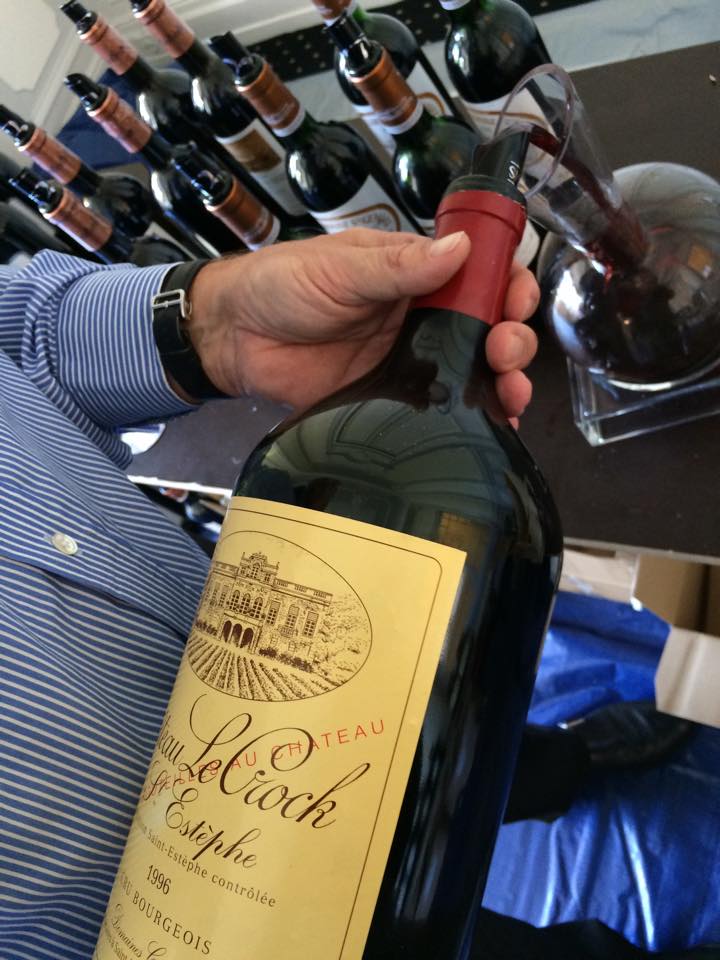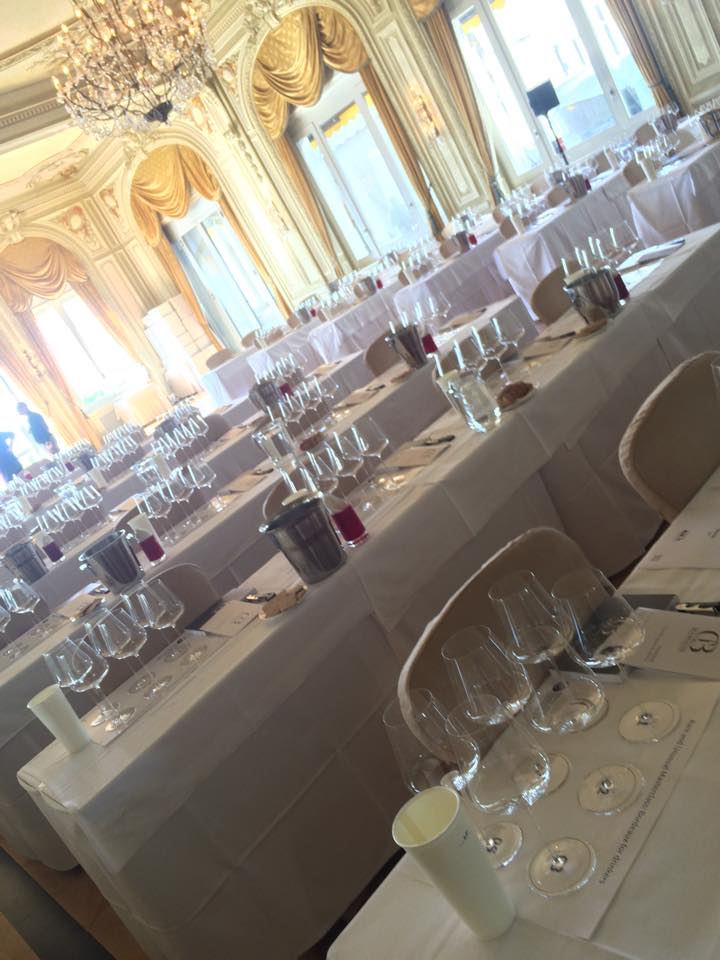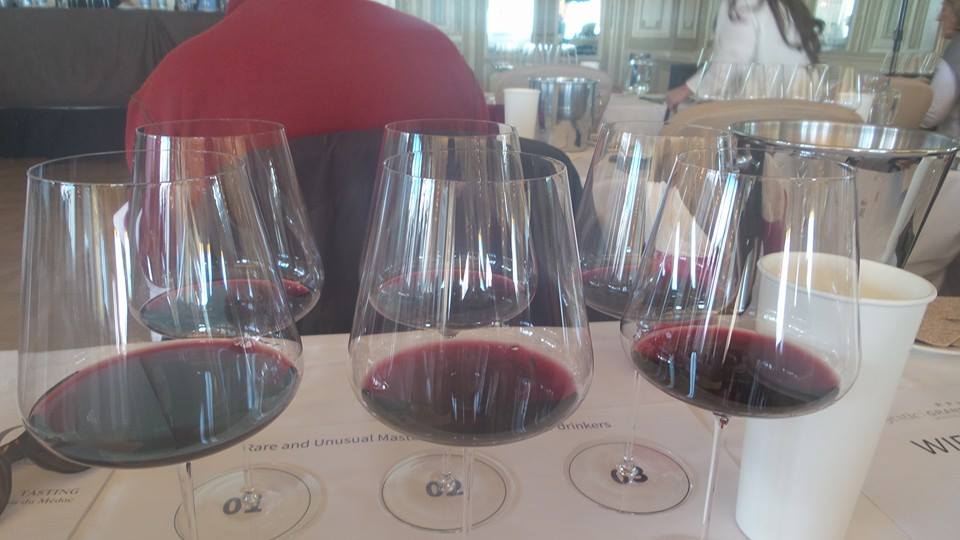Cru Bourgeois, if bored with the dough
TASTING CRU BOURGEOIS – BORDEAUX FOR DRINKERS – #DWCC2014
Readers take note: The fact that I have a full time job unrelated to wine permitted me to co present these wines without any payment – from either the cru bourgeois producers or from the DWCC. My interest and passion for these wines is not influenced in any way by commercial interests.
By Panos Kakaviatos for wine-chronicles.com
1 November 2014
The theme for this year’s master classes at the Digital Wine Communications Conference in Montreux, Switzerland was rare and unusual.
So when I suggested a tasting of cru bourgeois Bordeaux – whose producers release hundreds of thousands of bottles per year – it seemed counter intuitive.
Or was it?
Frédéric de Luze, president of the the Cru Bourgeois du Médoc Association, jumped at the chance to promote the wines of some 250+ members, but that was not really my main point in organizing the tasting for this increasingly important wine conference.
No, it was to prove the point – and I think most participants, from Yves Beck in Switzerland to Alex Rychlewski in Bordeaux agreed – that you need not spend an arm or a leg to enjoy quality claret that can age well.

A double magnum from 1996. This cru bourgeois was yet more proof that you don’t need to spend an arm or a leg for quality claret.
As you can see in my Power Point presentation to the master class – Bordeaux for drinkers – too many people think that Bordeaux is just about super high point scores, super high prices and financial investment portfolios.
What about the wine?
Whatever happened to wine as a consumer product, to drink and to enjoy with friends? Sky-scraping prices have resulted in a Bordeaux backlash for many markets. Consumers and traders lament that the en primeur system is busted. Others just think that Bordeaux is for elites in China.
Earlier this week, I had co-presented the wines of Chateau Canon and Chateau Rauzan Segla with wine director John Kolasa, who sang very much the same tune: “We have forgotten to talk about the wine” and “prices must come down” … Kolasa wears two hats. He is a negociant and a director of individual estates, both highly ranked – Chateau Rauzan-Segla 2nd Growth in Margaux and Chateau Canon, premier grand cru classé in Saint Emilion. Readers may recall how Rauzan Segla came out at a ridiculously high price in 2010. But Mr. Kolasa now says that high prices were errors that Bordeaux cannot sustain. Rauzan Segla prices have been among the most reasonable since 2010… He may be right, at this stage. Demand is low in any case. And in the US, merchants say that they are sick and tired of excessive pricing.
Except for one category: Cru Bourgeois.
Of course these wines are never going to compete with the likes of, say, Pichon Baron or Montrose. But they can punch (well) above their weight and prices are not like yo-yos depending on the market. Prices tend to remain stable, whether a great vintage or an average vintage.
The tasting at the Digitial Wine Communications Conference, Montreux on 30 October 2014
The tasting featured 11 wines spanning almost 20 years to illustrate some not-so-common sense about one of France’s most famous wine regions: you do not need to spend triple-digit price tags per bottle to enjoy fine Bordeaux. Situated in a price category between classified growths and basic Bordeaux, under-the-radar “Cru Bourgeois” wines are for drinkers. Dating their legacy back to the Middle Ages, the cru bourgeois wines of Bordeaux were initially designated some 444 estates as cru bourgeois in 1932. Since then several classifications have come and gone. You can read more about the category in this Powerpoint Montreux presentation.
Flight 1
All 2010s. 2010 is considered to be among the best recent vintages in Bordeaux, with high tannins, high levels of ripeness and excellent potential for aging. Although some critics – John Gilman comes to mind – are not as excited about it, I think the wines tasted below proved the point that 2010 can be very good indeed. One concern: high alcohol levels for Merlot.
Chateau Arnauld Haut Medoc: Made from 57% Cabernet Sauvignon and 43% Merlot, this wine comes in an extra large sized bottle, and my fears were slightly confirmed with its “modern” expression of heady extract and alcohol. Overall, it came off unbalanced, and although it could impress palates seeking power – as the tannins and the richness levels were high – it did not leave me asking for more. Especially because it costs about 25 euros per bottle… Still: De gustibus non est disputandum. 85/100
Chateau Bernadotte Haut Medoc: Made from 52% Cabernet Sauvignon and 48% Merlot, this wine – then under same ownership as Chateau Pichon Longueville Comtesse de Lalande – is much more my style. Fragrant, elegant and smooth on the palate, with underlying structure with an aging potential of about 10+ years. And you can find it for about 20 euros per bottle if not less. 89/100
Chateau Saransot-Dupre Listrac-Medoc: Made from 58% Merlot, 23% Cabernet Sauvignon, 15% Cabernet Franc, 3% Petit Verdot and 1% Carmenere (a forgotten variety in Bordeaux), this wine came across as slightly rough around the edges but certainly a juicy mid palate and fine acidity to make it worthy of current drinking (with a steak for example). Furthermore, the price at about 15 euros is certainly friendly. 87/100
Chateau Gressier Grand Poujeaux Moulis: Made from 50% Cabernet Sauvignon and 50% Merlot, this wine was noticeably smoother than the Listrac – and that is usually a hallmark of wines from the Moulis appellation. At about the same price point, a very good purchase. 88/100
Chateau La Tour de Mons Margaux: Made from 55% Merlot, 36% Cabernet Sauvignon, 5% Petit Verdot and 4% Cabernet Franc, I really liked the almost floral aromas and red fruit on the nose – very Margaux like – but the palate was a bit more tough. One participant did not like it, but I think you can chalk it up to the wine not being quite ready to drink. At just under 20 euros, a good example of cru bourgeois Margaux that does not hurt your wallet. 88/100
Chateau Haut Bages Monpelou: Made from 69% Cabernet Sauvignon, 26% Merlot and 5% Cabernet Franc, this was by far the very best of this flight: WOTF! Of course a bit more expensive than the others, but you could sneak this into a classified growth tasting and it would perform admirably. The quintessential iron fist in the velvet glove, this Pauillac showed power and elegance, even a satiny texture, all the while with excellent structure and length – and 20+ years potential aging. 92/100
Flight 2:
Various vintages dating back to 1996, all indicating that cru bourgeois can age well so your fine claret need not be super expensive…
Chateau Beau-Site Saint Estephe 2009: Another highlight of today’s tasting. An excellent vintage for the northern Medoc where warmer weather went hand in glove with the cooler soils of this vineyard. Made from 70% Cabernet Sauvignon, 25% Merlot, 3% Petit Verdot and 2% Cabernet Franc, this was not quite as impressive as the Pauillac preceding it but not loin derrière. Hats off to the owners and management at Casteja for both Beau-Site and Haut Bages Monpelou. 91/100
Chateau Paveil de Luze Margaux 2005: A noticeable step up from La Tour de Mons, this wine – made from 70% Cabernet Sauvignon and 30% Merlot – was nonetheless too young at this stage for my taste as it had a coiled in mid palate, but there is much concentration and structure. Some tasters – including the owner’s father – enjoy it as it is today. I think that with a few more years in bottle, it will be even better. 90/100
Chateau L’Argenteyre Medoc 2003: This may be the bargain wine of the entire tasting. At less than 10 euros per bottle, this blend of 40% Cabernet Sauvignon, 45% Merlot and 15% Petit Verdot truly impresses – and from the torrid and rather difficult 2003 vintage. Smooth and not without concentration and verve, this wine is ready to drink today and with great pleasure. A few years back, I did a blind tasting of cru bourgeois from the 2009 vintage, and this estate was among the highest rated by friends (and drinkers) in Strasbourg – see video below. 90/100
Chateau Caronne Sainte Gemme Haut Medoc 2000: Showing tertiary notes of fresh earth and mushroom but only lightly so, this blend of 60% Cabernet Sauvignon, 37% Merlot and 3% Petit Verdot has always been a favorite of cru bourgeois connoisseurs. Aged in 33% new barrels, everything has come into place for this nearly 15 year-old-wine and it is highly recommended for current enjoyment. 90/100
Chateau Le Crock Saint Estephe 1996: The treat of the entire tasting. Chateau Le Crock already has earned much praise from professional critics – such as this recent notation from Decanter – as a top cru bourgeois. But what made this vintage special was that we enjoyed it from a double magnum bottle and it tasted fresher and more lively than one would have expected for a cru bourgeois nearly 20 years old. The aromatics were beguiling. As it was being poured into a carafe, they filled the room. The palate was smooth and refined, with excellent structure and a long finish. 92/100
 Wine Chronicles
Wine Chronicles

Share This